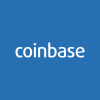As stated in the intro, Ethereum is a platform for building blockchain applications using smart contracts. What you may have just purchased on Coinbase is called Ether, which is the cryptocurrency that fuels the Ethereum network.
Ether functions more like a digital commodity than a digital currency. Just like you need gasoline to fuel your car, you need Ether to run applications on the Ethereum blockchain. In the Grandmother example cited above, Grandma would have to purchase small amounts of Ether to fuel her smart contract that pays Little Billy his birthday money.
The Ethereum blockchain functions in the same way as the Bitcoin blockchain: a network of computers run software that validates transactions through majority consensus. The people running these computers are called miners. Bitcoin miners are compensated for their resources by being paid in Bitcoin. Ethereum miners are compensated in Ether. On Little Billy’s birthday, Grandma’s ether transaction fee will go to whichever miner adds the block containing Grandma’s transaction to the blockchain. That miner will also receive new Ether in the process.
The same supply/demand economics that apply to commodities like oil and gas also apply to Ether. Oil is valuable because it powers many of the things we use in our everyday life – it heats our homes and fuels our engines. The more people and enterprises that rely on Ethereum based applications, the higher the demand will be for Ether which will increase its value. As with all cryptocurrencies, there’s plenty of speculation baked into the price – speculation that the demand for Ether will increase in the future. Since Ether is valuable, exchangeable and transferable, certain merchants are also starting to accept it as a currency, including Overstock.






